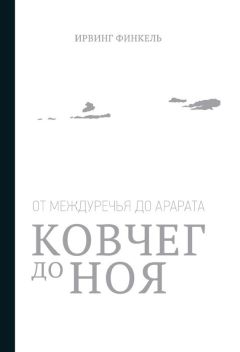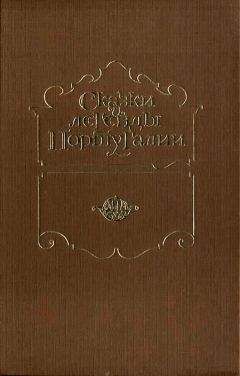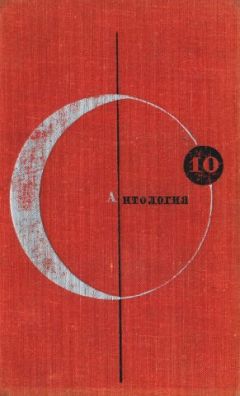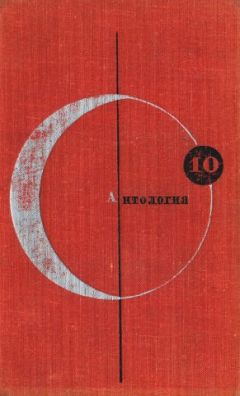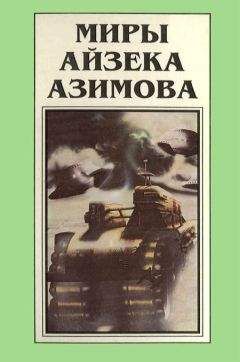• de Breucker, G., ‘Berossus between Tradition and Innovation’, in K. Radner and E. Robson (eds), The Oxford Handbook of Cuneiform Culture. Oxford, 2011: 637-57.
• Budge, E. A. W., Assyrian Sculptures in the British Museum. London, 1914.
• Budge, E. A. W., By Nile and Tigris, Vols 1–2. London, 1920 [reprint: Hardinge Simpole, Kilkerran, 2011].
• Budge, E. A. W., The Rise and Progress of Assyriology. London, 1925.
• Burstein, S. M., The Babyloniaca of Berossus: Sources from the Ancient Near East, Vol. 1, fasc. 5. Malibu, 1978.
• Butler, S. A. L., Mesopotamian Conceptions of Dreams and Dream Rituals. Alter Orient und Altes Testament, Vol. 258. Munster, 1998.
• Carter, R. A., ‘Watercraft’, in D. T. Potts (ed.), A Companion to the Archaeology of the Ancient Near East, Vol. 1. Oxford, 2012: 347-72.
• Cavigneaux, A. ‘Aux sources du Midrash; l’hermeneutique babylonienne’, Aula Orientalis 5: 243-55.
• Charpin, D., Reading and Writing in Babylon. Cambridge, MA and London, 2010.
• Chesney, F. R., The Expedition for the Survey of the rivers Euphrates and Tigris carried on by Order of the British Government in the Years 1835, 1836 and 1837. Vol. 2. London, 1850.
• Civil, M., ‘The Sumerian Flood Story’, in Lambert and Millard 1969: 13845, 167-72.
• Civil, M., ‘Lexicography’, in S. J. Lieberman (ed.), Sumerian Studies in Honor of Thorkild Jacobsen on his Seventieth Birthday, June 7, 1974. Assyriological Studies 20. Chicago, 1975: 123-57.
• Cohn, N., Noah’s Flood: The Genesis Story in Western Thought. Yale, 1996.
• Collins, P., From Egypt to Babylon: The International Age 1550-500 bc. London, 2008.
• Cooper,J. S., ‘Babbling On: Recovering Mesopotamian Orality’, in M. E. Vogelzang and H. L. J. Vanstiphout (eds), Mesopotamian Epic Literature: Oral or Aural? Lewiston, Queenston and Lampeter, 1992: 103-21.
• Cory, I. P, Ancient Fragments of the Phoenician, Chaldaean, Egyptian, Tyrian, Carthaginian, Indian, Persian and other Writers with an Introductory Dissertation: and an Enquiry into the Philosophy and Trinity of the Ancients. Second edition. London, 1832.
• Crouse, B. and G. Franz, ‘Mount Cudi – True Mountain of Noah’s Ark’, Bible and Spade 19/4 (2006): 99-111.
• Damrosch, D., The Buried Book: The Loss and Rediscovery of the Great Epic of Gilgamesh. New York, 2006.
• de Graeve, M.-C., The Ships of the Ancient Near East (c. 2000-500 B. C.). Orientalia Lovaniensia Analecta, Vol. 7. Leuven, 1981.
• Da Riva, R., ‘Nebuchadnezzar Il’s Prism (ES 7834): A New Edition’, ZeitschHft fur Assyriologie und Vorderasiatische Archaologie, 103/2 (2014): 196–229.
• Drews, R., ‘The Babylonian Chronicles and Berossus, Iraq37 (1975): 39–55.
• Driver, S. R., The Book ofGenesis. London, 1909.
• Dundes, A. (ed.), The Flood Myth. California, 1988.
• Farber, W., Schlaf, Kindchen, Schlaf Mesopotamische Baby-Beschworungen und – Rituale. Mesopotamian Civilizations 2. Winona Lake, 1989.
• Finkel, I. L., ‘Bilingual Chronicle Fragments’, Journal of Cuneiform Studies 32 (1980): 65–80.
• Finkel, I. L., ‘The Dream of Kurigalzu and the Tablet of Sins’, Anatolian Studies 33 (1983a): 75–80.
• Finkel, I. L., ‘Necromancy in Ancient Mesopotamia’, Archiv fur Orientfotschung 29 (1983b): 1-16.
• Finkel, I. L., ‘AJoin to the Map of the World: A Notable Discovery’, British Museum Magazine: The Journal ofthe British Museum Fnends, 23 (1995): 26-7.
• Finkel, I. L., ‘The Lament of Nabu-suma-ukin’, in J. Renger (ed.), Babylon: Focus mesopotamischer Geschichte, Wiege fruher Gelehrtsamkeit, Mythos in der Moderne. Saarbrncken, 1999: 323-41.
• Finkel, I. L., ‘The Game and the Play of the Royal Game of Ur’, in I. L. Finkel (ed.), Ancient Board Games in Perspective. Papers of the 1991 Board Game Colloquium at the British Museum. London, 2008a: 22–38.
• Finkel, I. L., ‘The Babylonian Map of the World, or the Mappa Mundi, in I. L. Finkel and M. J. Seymour (eds), Babylon: Myth and Reality. London, 2008b: 17.
• Finkel, I. L., ‘Drawings on Tablets’, Scienze dellAntichita 17 (2011): 337-44.
• Finkel, I. L., ‘Assurbanipal’s Library: An Overview’, in K. Ryholt and G. Barjamovic (eds), Libraries Before Alexandria. Oxford, 2015a.
• Finkel, I. L., ‘Remarks on Cuneiform Scholarship and the Babylonian Talmud’, in U. Gabbay and Sh. Secunda (eds), Encounters by the Rivers of Babylon: Scholarly Conversations between Jews, Iranians, and Babylonians in Antiquity. Thbingen, 2015b.
• Forbes, R. J., Studies in Ancient Technology, Vol. 1. Leiden, 1955.
• Foster, B., Before the Muses, Vol. 1. Maryland, 1993.
• Foster, B., ‘Assyriology and English Literature’, in M. Ross (ed.), From the Banks of the Euphrates: Studies in Honor of Alice Louise Slotsky. Winona Lake, 2008.
• Frahm, E. Babylonian and Assyrian Text Commentaries. Guides to the Mesopotamian Textual Record 5. Mhnster, 2011.
• Frazer, J. G., Folklore in the Old Testament. London, 1918.
• Fulanain, Haji Rikkan: Marsh Arab. London, 1927.
• Gaster, M., The Chronicle of Jerahmeel; or the Hebrew Bible Historiale. Being a Collection of Apocryphal and Pseudo-epigraphical Books (by Various Authors: Collected by Eleazar ben Asher, the Levite) Dealing with the History of the World from the Creation to the Death of Judas Maccabeus. Oriental Translation Fund. New Series 4. London, 1899.
• Gaster, T. H., Myth, Legend and Custom in the Old Testament. New York and London, 1969.
• Geller, M. J., ‘The Last Wedge’, Zeitschrift fur AssyHologie 87 (1997): 43–95.
• Geller, M. J., ‘West Meets East: Early Greek and Babylonian Diagnosis’, Archivfur Orientforschung 18/19 (2001/2): 50–75.
• Geller, M. J., Akkadian Healing Therapies in the Babylonian Talmud. Preprint, Max Planck Institute for the History of Science no. 259. Berlin, 2004.
• Geller, M. J., ‘Berossos on Kos from the View of Common Sense Geography’, in K. Geus and M. Thiering (eds), Common Sense Geography and Mental Modelling. Preprint, Max Planck Institute for the History of Science. Berlin, 2012: 101-9.
• George, A. R., The Epic of Gilgamesh: The Babylonian Epic Poem and Other Texts in Akkadian and Sumerian. London and New York, 1999.
• George, A. R., The Babylonian Gilgamesh Epic. Introduction, Critical Edition and Cuneiform Texts, Vols 1–2. Oxford, 2003.
• George, A. R., ‘Babylonian and Assyrian: A History of Akkadian’, in J. N. Postgate (ed.), Languages of Iraq Ancient and Modern. Cambridge, 2007: 31–71.
• George, A. R., ‘The Truth about Etemenanki, the Ziggurat of Babylon’, in I. L. Finkel and M. J. Seymour (eds), Babylon: Myth and Reality. London, 2008: 126-9.
• George, A. R., Babylonian Literary Texts in the Schøyen Collection. Cornell University Studies in Assyriology and Sumerology, Vol. 10. Manuscripts in the Schøyen Collection, Cuneiform Texts IV. Maryland, 2009.
• George, A. R., ‘The Sign of the Flood and the Language of Signs in Babylonian Omen Literature’, in L. Kogan (ed.), Language in the Ancient Near East. Winona Lake, 2010: 323-35.
• George, A. R. and F. N. H. Al-Rawi, ‘Tablets from the Sippar Library VI: Atra-hasis’, Iraq 58 (1996): 147-90.
• Gesche, P, Schulunterricht in Babylonien im ersten Jahrtausend v. Chr. Alter Orient und Altes Testament, Vol. 275. Mdnster, 2000.
• Gmirkin, R. E., Berossus, Genesis, Manetho and Exodus: Hellenestic Histories and the Date of the Pentateuch. New York and London: 2006.
• Goldstein, R., ‘Late Babylonian Letters on Collecting Tablets and their Hellenistic Background’, Journal of Near Eastern Studies 69 (2010): 109–207.
• Grayson, A. K., Assyrian and Babylonian Chronicles. Texts from Cuneiform Sources, Vol. 5. New York, 1975.
• Grayson, A. K., Assyrian Rulers of the Early First Millennium BCI (1114859 bc). The Royal Inscriptions of Mesopotamia. Assyrian Periods, Vol. 2. Toronto, Buffalo and London, 1991.
• Grayson, A. K., Assyrian Rulers of the Early First Millennium BC II (858745 bc). The Royal Inscriptions of Mesopotamia: Assyrian Periods. Vol. 3. Toronto, Buffalo and London, 1996.
• Grayson, A. K. and J. Novotny, The Royal Inscriptions of Sennacherib, King of Assyria (704–681 bc), Part 1. Royal Inscriptions of the Neo-Assyrian Period 3/1. 2012.
• Hess, R. S., ‘The Genealogies of Genesis 1-11 and Comparative Literature’, in R. S. Hess and D. T. Tsumura (eds), ‘I Studied Inscriptions from before the Flood’. Ancient Near Eastern, Literary and Linguistic Approaches to Genesis 1-11. Winona Lake, 1994: 58–72.
• Hess, R. S. and D. T. Tsumura (eds), ‘I Studied Inscriptions from before the Flood’. Ancient Near Eastern, Literary and Linguistic Approaches to Genesis 1-11. Winona Lake, 1994.
• Hilprecht, H., The Earliest Version of the Babylonian Deluge Story and the Temple Library of Nippur. The Babylonian Expedition of the University of Pennsylvania Series D: Researches and Treatises, Vol. 5, fasc. 1, 1910.
• Holder, P A., The Roma,n Army in Britain. London, 1982.
• Hornell, J., ‘The Coracles of the Tigris and Euphrates’, The Mariner’s Mirror [Quarterly Journal of the Society for Nautical Research] 24/2: April 1938: 153-9 [reprint: British Coracles and Irish Curraghs with a Note on the Quffah of Iraq, London, 1938].
• Hornell, J., Water Transport: Origins & Early Evolution. Cambridge, 1946.
• Horowitz, W., ‘The Babylonian Map of the World’, Iraq 50 (1988): 147-65.
• Horowitz, W., Babylonian Cosmic Geography. Mesopotamian Civilisations 8. Winona Lake, 1998.
• Ismail, M., Wallis Budge: Magic and Mummies in London and Cairo. Kilkerran,2011.
• Jacobsen, T., The Sumerian King List. Assyriological Studies 11. Chicago, 1939.
• Jacobsen, T., The Treasures of Darkness. New Haven and London, 1976.
• Jacobsen, T., The Harps that Once… New Haven and London, 1987.
• Jacoby, F., Die Fragmente der griechischen Historiker, Vol. 3. Leiden, 1958.
• Jullien, C. and F., La Bible en Exil. Civilisations du Proche-Orient 3. Religions et Culture 1. Paris, 1995.
• Jursa, M., ‘Nabu-šārrussu-ukin, und “Nebušārsekim” (Jer. 39:3)’, Nouvelles Assyriologiques Breves et Utilitaires 1 (2008): 10.
• Jursa, M., ‘Der neubabylonische Hof, in B. Jacobs and R. Rollinger (eds), Der Achamenidenhof: The Achaemenid Court. Akten des 2. Internationalen Kolloqiuims zum Thema ‘Vorderasien im Spannungsfeld klassicher und altorientalischer Uberlieferungen’. Landgut Castelen bei Basel, 23–25 May 2007. Wiesbaden, 2010: 67–95.
• Kaysel, R., Arche Noah. Schweizer Kindermuseum Baden, 1992.
• Kilmer, A. D., ‘The Mesopotamian Concept of Overpopulation and Its Solution as Reflcted in the Mythology’, Orientalia New Series 41 (1972): 160-77.
• Kilmer, A. D., ‘Sumerian and Akkadian Names for Designs and Geometric Shapes’, in A. C. Gunter (ed.), Investigating Artistic Environments in the Ancient Near East. Washington, 1990: 83-6.
• Kilmer, A. D., ‘The Symbolism of the Flies in the Mesopotamian Flood Myth and some Further Implications’, in F. Rochberg-Halton (ed.), Language, Literature and History: Philological and Historical Studies Presented to Erica Reiner. New Haven, 1987: 175-80.
• Kwasman, T., ‘Loanwords in Jewish Babylonian Aramaic: Some Preliminary Observations’, in M. J. Geller and S. Shaked (eds), Babylonian Talmudic Archaeology, Leiden, forthcoming.
• Lambert, W. G., ‘An Address of Marduk to the Demons’, Archiv fur Orientforschung 17 (1954-6): 310-21.
• Lambert, W. G., Babylonian Wisdom Literature. Oxford, 1960a.
• Lambert, W. G., ‘New Light on the Babylonian Flood’, Journal of Semitic Studies 5 (1960b): 113-23.
• Lambert, W. G., ‘The Reign of Nebuchadnezzar I: A Turning Point in the History of Ancient Mesopotamian Religion’, in W. S. McCullough (ed.), The Seed of Wisdom: Essays in Honor of T. J. Meek. Toronto, 1964.
• Lambert, W. G., ‘Berossus and Babylonian Eschatology’, Iraq 38 (1976): 171-3.
• Lambert, W. G., ‘Nisir or Nimus?’ Revue d’Assyriologie80 (1986): 185-6.
• Lambert, W. G., ‘A New Look at the Babylonian Background of Genesis’, in Hess and Tsumura (eds), 1994: 96-113.
• Lambert, W. G. and A. R. Millard, Atra-Hasis: The Babylonian Story of the Flood. Oxford, 1969.
• Landsberger, B., Die Fauna des alten Mesopotamien nach der 14. Tafel der Series HAR-RA = HUBULLU. Leipzig, 1934.
• Landsberger, B., The Fauna of Ancient Mesopotamia, First Part. Materialen zum sumerischen Lexikon, Vol. 8/1. Rome, 1960.
• Landsberger, B., The Fauna of Ancient Mesopotamia, Second Part. Materialen zum sumerischen Lexikon, Vol. 8/2. Rome, 1962.
• Leemans, W. F., Review of Forbes 1955, Journal of the Economic and Social History of the Orient3 (1960): 218-21.
• Lewis, B., The Sargon Legend: A Study of the Akkadian Text and the Tale of the Hero Who was Exposed at Birth. American Schools of Oriental Research Dissertation Series 4. Cambridge, 1980.
• Lewis, J. P, A Study of the Interpretation of Noah and the Flood in Jewish and Christian Literature. Leiden, 1978.
• Lieberman, S. ‘A Mesopotamian Background for the So-called Aggadic “Measures” of Biblical Hermeneutics?’ Hebrew Union College Annual 58 (1987): 157–225.
